Every Halloween, we cozy up to fear like it’s an old friend. Ghost stories, demonic possessions, ancient curses, and alien abductions are sold to us as entertainment, but what if they’re more than just fiction? In the shadows of mainstream science, there lies an undeniable body of historical, cultural, and psychological data that suggests the supernatural may simply be the natural we don’t yet have the tools to measure. Let’s take a scalpel, not garlic and holy water, to the evidence.
Nearly all ancient civilizations encounter with Beings from the sky or stars. Mesopotamian Anunnaki, Mayan gods, Dogon Nommo. Spiritual entities that whisper, possess, or guide djinn, daemons, kami. Wings and light or fire. Biblical angels, Hindu devas, Norse Valkyries.
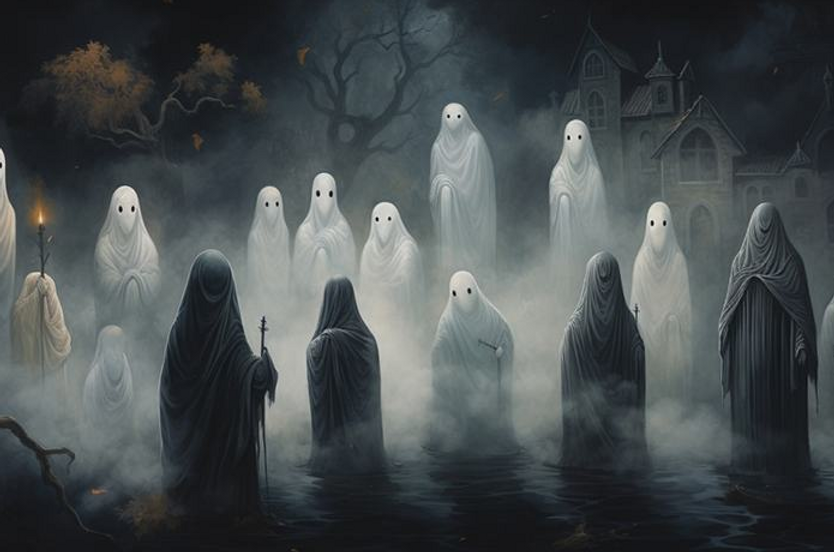
When disjointed cultures with no contact tell eerily similar stories, any real scientist or anthropologist should pause and ask: “Is this mass hallucination, or misinterpreted interaction with something real?” But no, academia sweeps it aside, labeling it religion, myth, or psychosis. Not because of evidence, but because it threatens existing paradigms. The Big Bang is inferred from background radiation and redshift.
But it has never been observed and has multiple unresolved paradoxes, inflation, dark energy, and horizon problems. Meanwhile, angelic/demonic/alien encounters have: Historical records, similar descriptive patterns across continents ,and centuries Anecdotal but voluminous modern-day encounters, abductions, NDEs, visions, etc. Some physical traces (burns, implants, physiological symptoms). Yet one is in textbooks. The other is on late-night TV. Why?
Because science doesn’t favor the quantity of data, it favors control and repeatability. And these entities don’t seem to like being poked in a lab. Let’s get a little dirty, darling: modern Western science grew on the bones of colonialism.
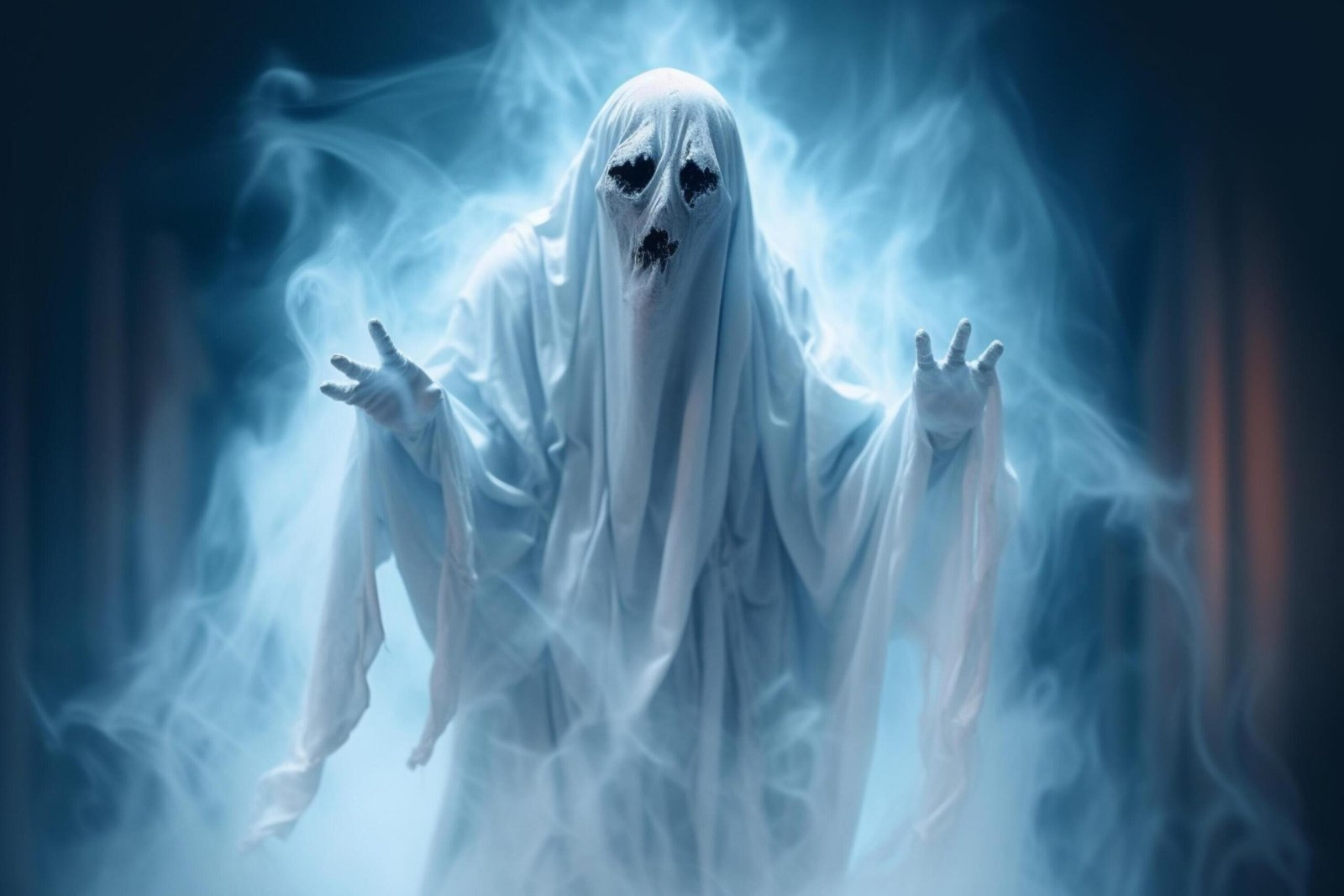
Indigenous belief systems, rich in nuanced understanding of non-physical intelligences, were labeled “primitive.” The folklore you mention? It’s not just a superstition. It’s an encoded observation. Shamans didn’t just “believe” in spirits, they interacted with them, documented rituals, symptoms, and cures. “Myths” were often symbolic records of encounters, transcribed in ways their worldview could interpret.
The West didn’t understand it, so it wasn’t science. It was savagery. But savagery had better empirical documentation of the “unseen” than modern journals ever dared touch. Carl Jung, talked about: alien encounters bear an uncanny resemblance to demonic visitations, abduction, paralysis, time loss, transformative messages, and altered consciousness. Could it be?
A phenomenon evolving with our beliefs? Or the same entities, appearing through psychocultural filters? Either way, these experiences are persistent, repeatable (in pattern), and psychologically real. But because they don’t fit neatly into particle physics or empirical psychology, we slap on a “delusional” label and move on.
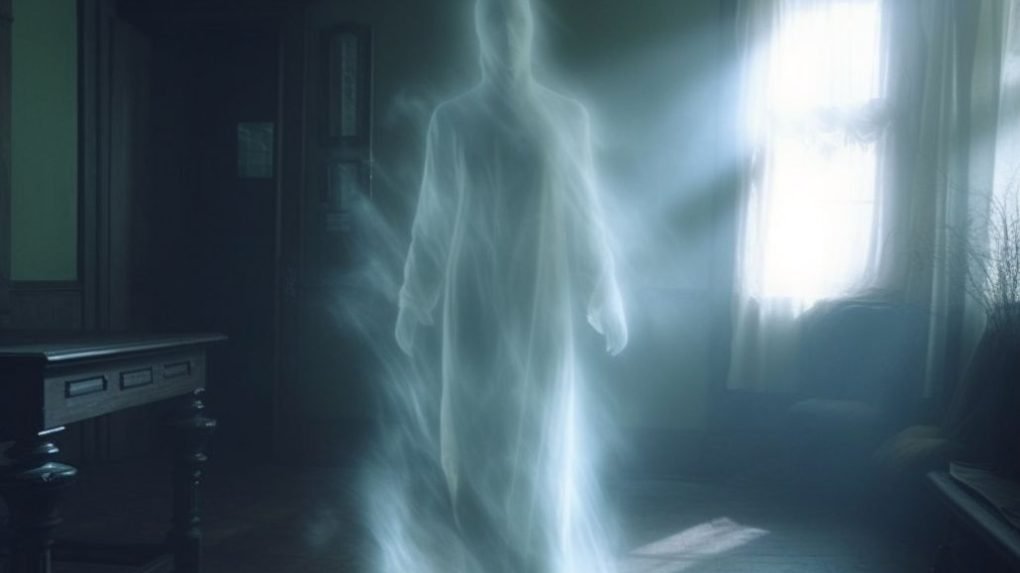
Simple. Power hates uncertainty. Academia, like religion, is a control system. Accepting the possibility of non-human, intelligent, and reality-interfacing beings? Collapses materialist science disempowers organized religion’s monopoly on the “divine”. Throws open the doors to a cosmic zoo we’re not prepared to cage. So instead, they gaslight humanity into calling their ancestors crazy, their myths fiction, and their gods hallucinations. Ghosts, the original unwanted guests.
Long before aliens probed and demons possessed, humanity’s first supernatural obsession was the restless dead, those lingering presences that refuse to go gently into that good night. And here’s what science, in all its skeptical glory, can’t deny: the pattern is global and ancient. Cold spots with no meteorological explanation.
Electromagnetic interference during sightings, disembodied voices, shadow figures, objects moving on their own, Ttme distortions, moments of lost time, or encounters with the past bleeding into the present. These aren’t just the drunken ramblings of teenagers with Ouija boards. They’ve been reported by pilots, surgeons, war veterans, law enforcement, and yes, even scientists.
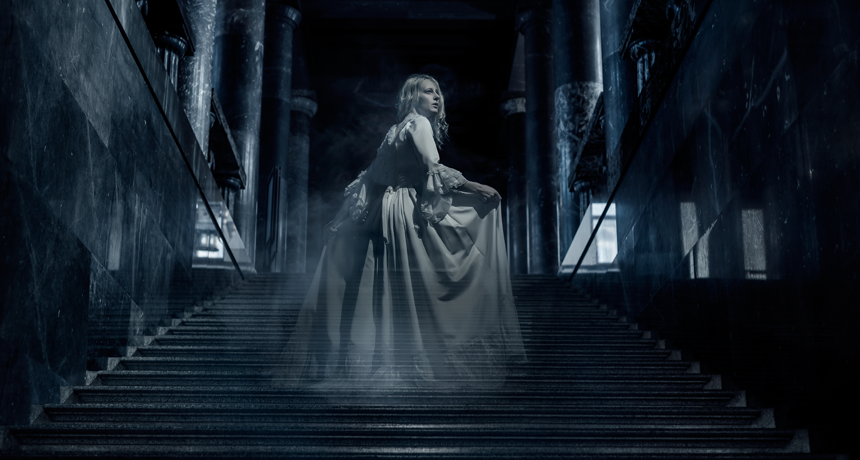
Hauntings tend to cluster in places steeped in trauma and transition: old hospitals, warzones, prisons, and battlefields. Anthropologists call these “liminal spaces”, thresholds between life and death, safety and suffering, memory and oblivion. Some researchers propose the idea of place-memory: that intense human emotion, particularly pain or death, leaves a kind of energetic residue.
A spiritual scar. Like a psychic bruise on the skin of reality. Now, let’s crank the strangeness. Some physicists suggest that consciousness may not be strictly brain-bound, that it could have quantum properties, capable of entangling or echoing across space-time. That means under the right conditions, a “ghost” might not be a lost soul, but a dimensional echo, a replay from a consciousness that was, still vibrating somewhere in the quantum fabric.
So maybe that woman in white by the staircase isn’t stuck here… Maybe she’s just bleeding through from a nearby, fold in reality. Psychologists offer another explanation: collective trauma as a projector. Just like your nervous system can replay traumatic memories in flashbacks, maybe the human psyche projects emotional experiences into the world, into objects, places, and entire environments.
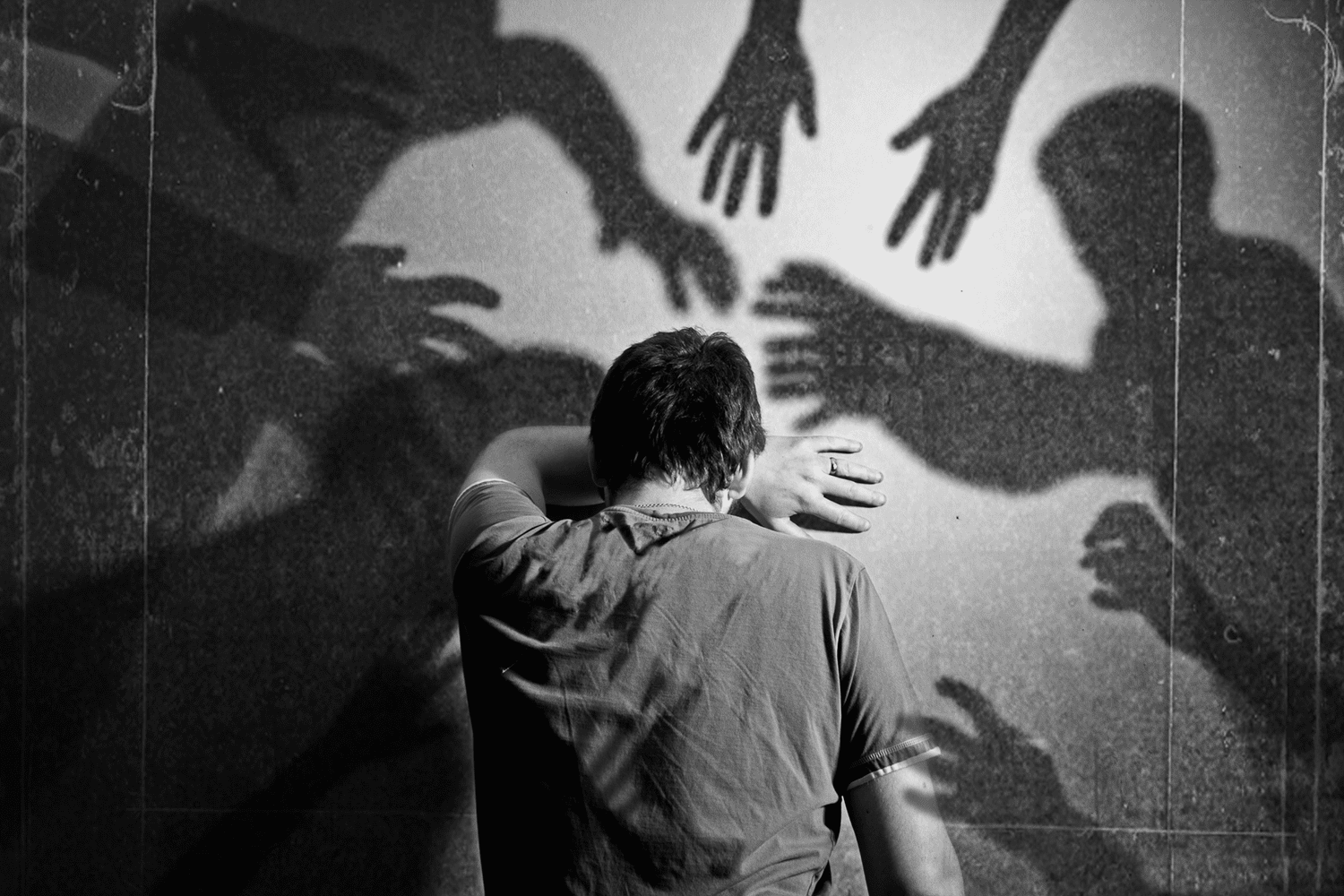
That’s an emergent psychology. Think of it like a haunted house as a PTSD patient, reliving on the past again, with every creak and chill as a symptom. Whether it’s trapped energy, trauma loops, or quantum residues, the implication is profound. Maybe the dead aren’t gone. Maybe they’re just… misfiled. Still present, still real, but outside the bounds of what we’re trained to perceive. Not fantasy.
Not fiction. Just phenomena without a framework. If you strip away the incense and Latin chants from a medieval exorcism and peel the blinking lights and space-metal from a modern alien abduction, you’re left with a raw, unsettling core: sleep paralysis, loss of control over the body, non-verbal or telepathic communication, profound psychological impact, same horror, and different wardrobes.
One wears horns and speaks in tongues. The other has almond eyes and scans your memories. But the underlying structure? Identical. Mainstream psychology, ever the party pooper, insists these events are the result of hypnagogic hallucinations, dissociative episodes, or psychotic breaks.
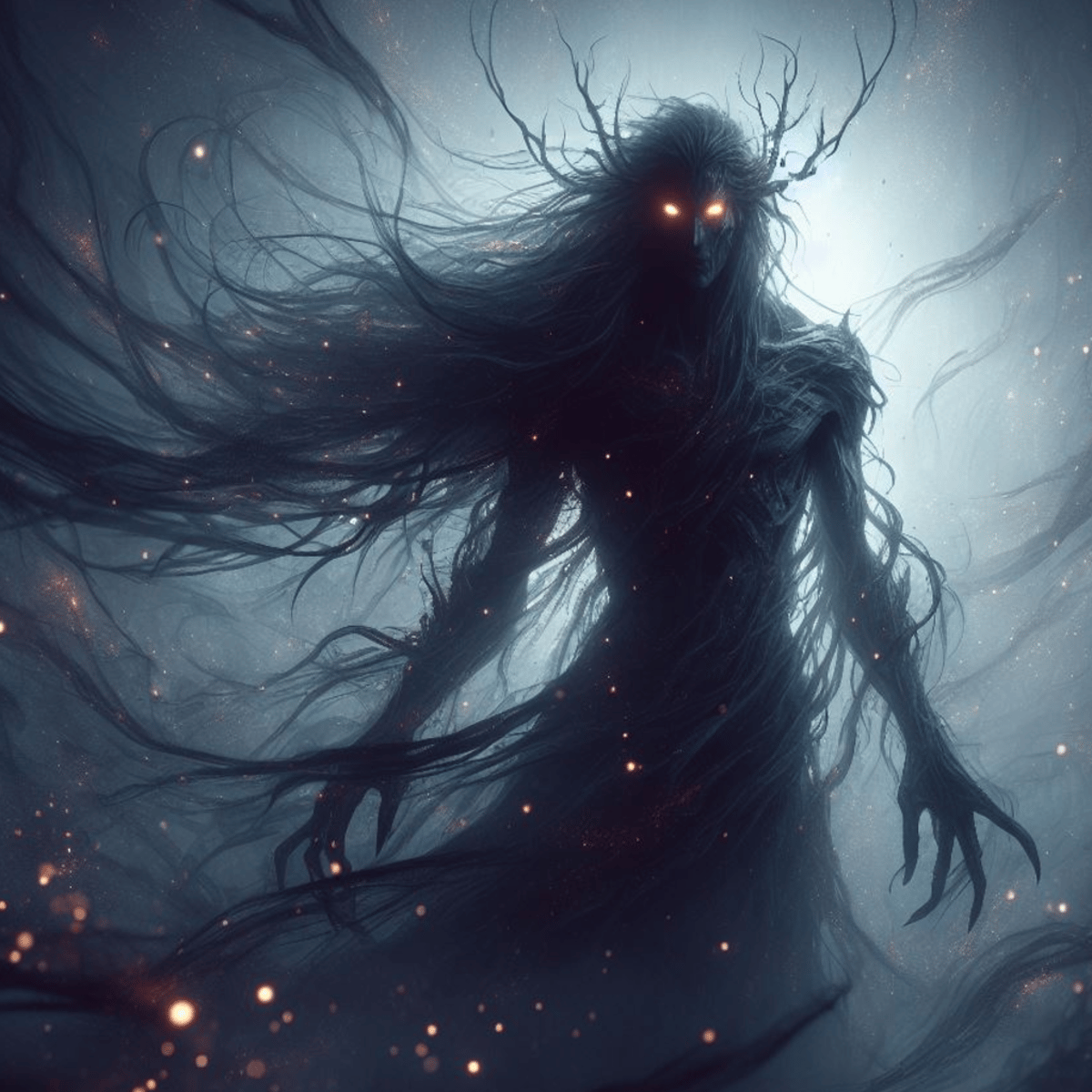
The brain misfires. You see things. You freeze. You panic. The story is written by itself. But if that’s true, why are the stories so eerily consistent across centuries and cultures? People describe: Reptilian entities with malevolent intent, light-emitting beings radiating calm or command, winged messengers delivering cryptic messages, and parasitic intelligences attempting to enter or control the body. Are we seriously expected to believe everyone’s subconscious downloaded the same monster template?
Or is something real, something external, filtering itself through the psychological operating systems of different eras? Carl Jung, the godfather of the shadow of self, thought such beings were archetypal projections, manifestations of deep psychic transformation, especially during trauma or spiritual awakening. In other words, demons and angels were you, seen through the funhouse mirror of altered consciousness.
But Jung also left the door suspiciously ajar for another possibility: “Not everything we see in the psyche is of the psyche.” What if these archetypes don’t just live in us, but also visitus? What if the human brain is not just a receiver of symbols… But a radar for non-humanintelligence.
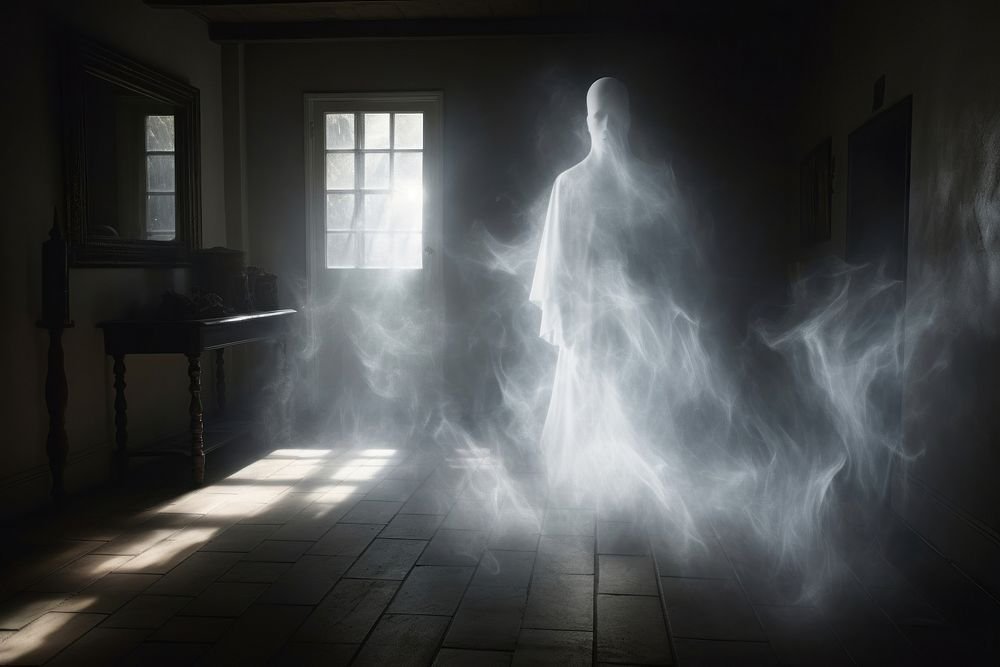
What if demons and angels are real. But they are also shaped by our perception. In the medieval mind, a reptilian entity becomes Satan. In the postmodern brain, it becomes a grey or draconian alien. The being may be the same; we’re just seeing it through a cultural filter. That’s not mythology.
That’s cognitive interface theory, the idea that we interact with reality through interpretive layers. The same way we see a rainbow, while a bee sees ultraviolet. So maybe what we call “possession” or “abduction” is a neurological door being kicked open. Across time, these intelligences have shared similar roles: They guide or tempt They test or torment They transform the human who survives the contact
Psychologically? That’s called individuation. Theologically? It’s spiritual warfare. Scientifically? It’s with behavioral consistency. Which begs the question: If a being can change your biology, cognition, and worldview permanently, is it really a hallucination? Or have you just met the cosmic equivalent of an invasive species?
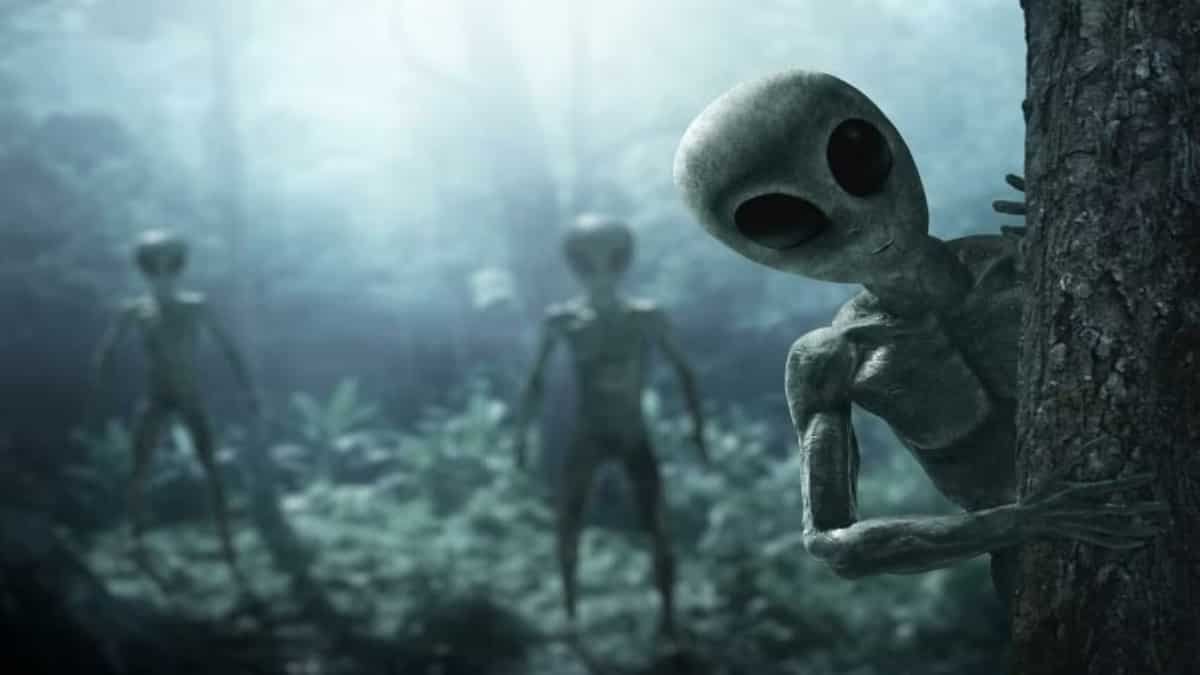
Once upon a time, believing in extraterrestrial visitors got you laughed out of the lab. Now? It gets you a Congressional hearing. We’ve entered a strange era where government officials murmur about non-human biologics. Pilots record impossible flight maneuvers on thermal imaging, and the phrase “we’re not alone” is no longer science fiction, it’s political language. But while the headlines scream, aliens are real; the details whisper something older, weirder, and far more familiar.
Let’s line up the dots. Alien Abduction: paralysis, missing time, forced experimentation, telepathic communication, symbolic messages, and life-altering trauma. Demonic possession (historical accounts): loss of control, unexplained knowledge, foreign speech, marked flesh, out-of-body experiences, and spiritual transformation. Shamanic Initiation / Faerie Kidnappings / Underworld Journeys: time distortion, contact with non-human beings, ritual scarring, divine or infernal wisdom, and rebirth of identity.
Different masks, same opera. So, are aliens technological visitors or just the same old Other, updated for the digital age? In 2020–2023, multiple governments quietly acknowledged the reality of UAPs, Unidentified Aerial Phenomena, with performance capabilities that violate known physics: instant acceleration right-angle turns at Mach speeds, underwater travel with zero resistance, and no heat signatures or exhaust trail.
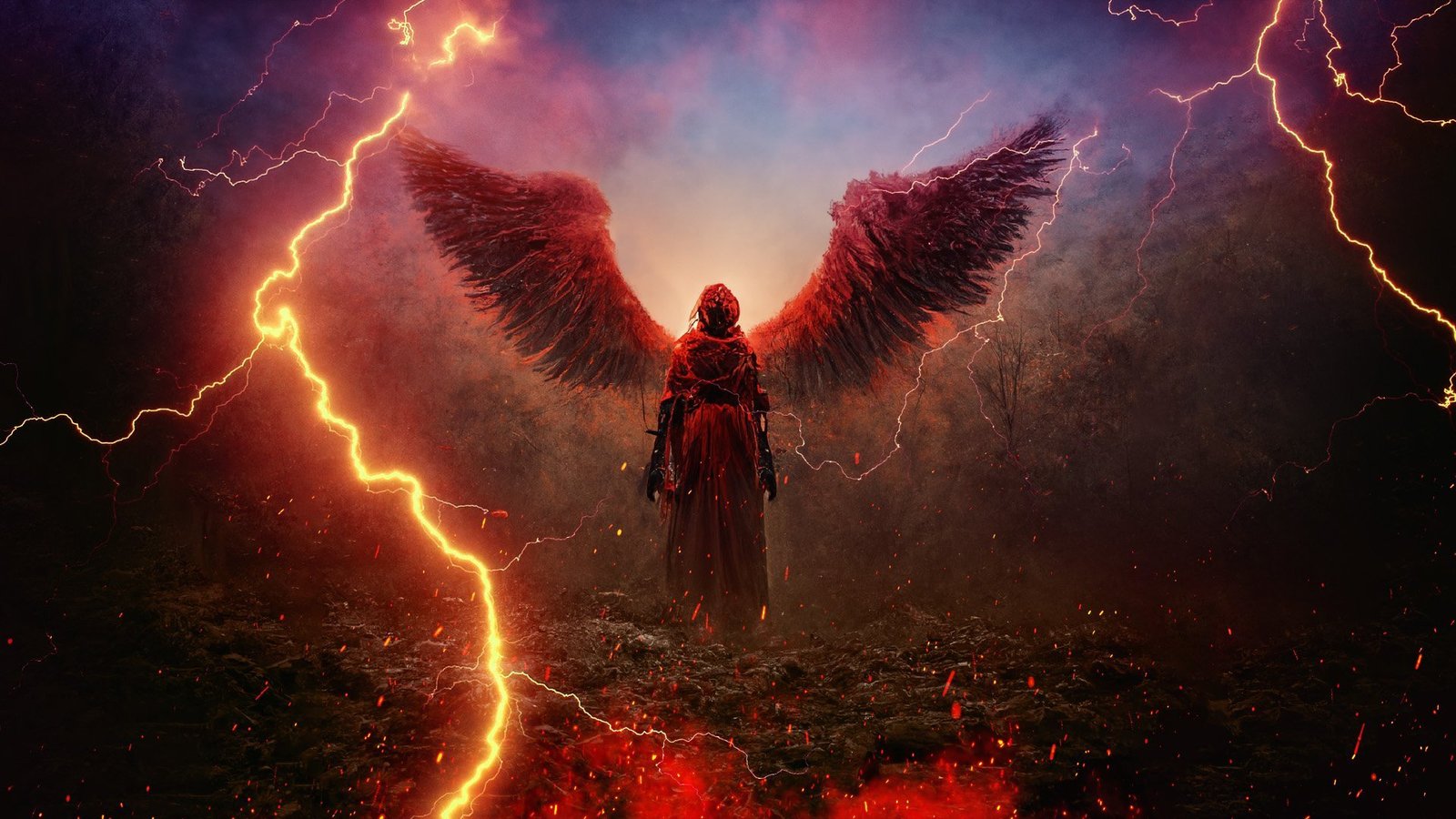
This isn’t primitive tech. This is post-physics, post-biological. It behaves more like conscious light than aircraft. And yet, in 16th-century grimoires, we read about fiery wheels, sky chariots, angels of fire, and “watchers” descending from the stars. Are we sure we’re dealing with aliens? Or are we staring into the return of entities humanity once worshipped, or feared, as gods?
Dr. John Mack, a Pulitzer-winning Harvard psychiatrist, did the unthinkable: he took alien abductees seriously. Not as delusional. Not as mentally ill. But as people are undergoing, real, transformative experiences, regardless of whether they could be captured on camera. His findings? Abduction experiences followed archetypal psychological patterns. The impact mirrored trauma-induced spiritual awakenings. Many experiencers reported ecological or existential messages from their captors. This wasn’t a simple psychological glitch.
It was something interacting with human consciousness in deep, consistent, and inexplicable ways. Mack didn’t say they were “just aliens.” He said they might be interdimensional entities, tied into human evolution, physically or psychically. And that made him very unpopular. Maybe aliens aren’t crossing the galaxy in ships.
Maybe they’re slipping through the cracks.
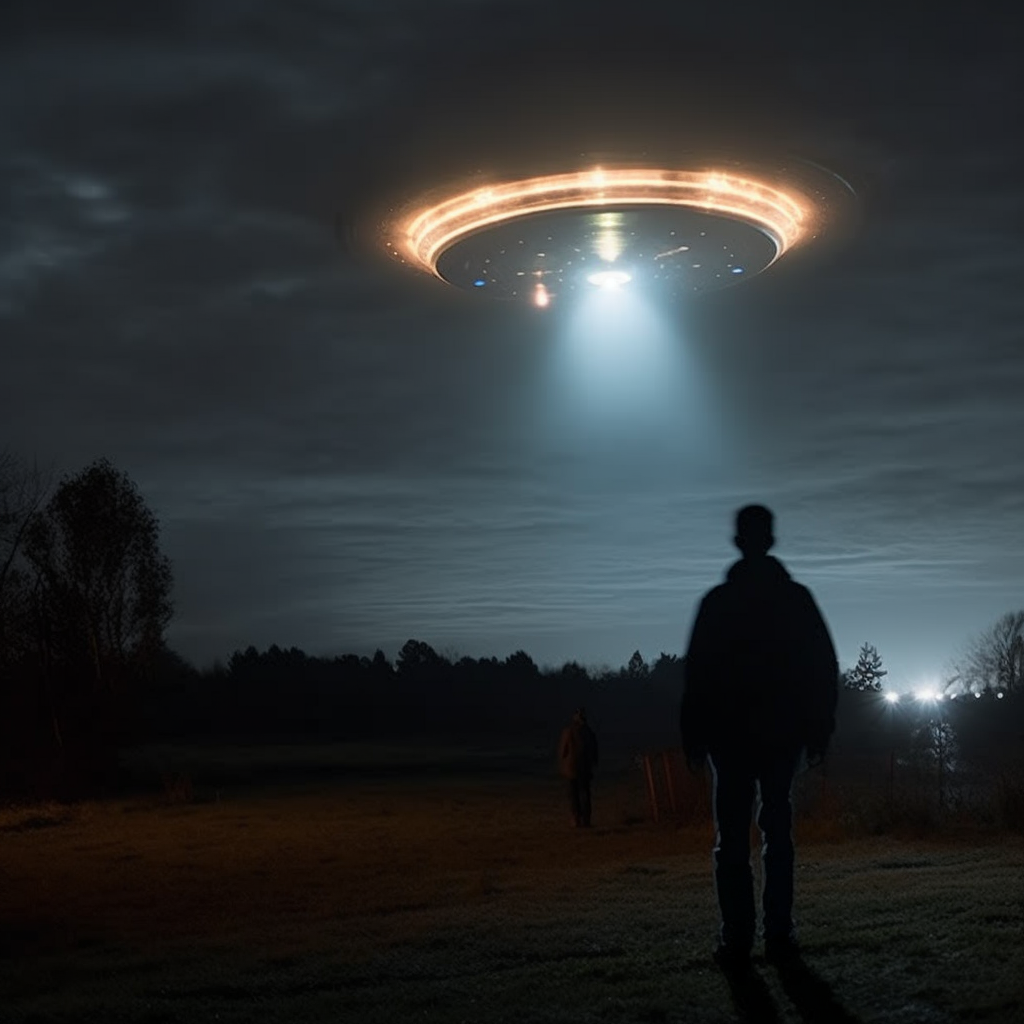
Possibilities include interdimensional lifeforms, post-biological AI, built by civilizations millions of years old. Conscious energy fields using man psyche timeless archetypes, revealing themselves through whatever form our minds can grasp. In altered statism, DMT trips, trauma-induced dissociation, dream paralysis, we seem to access the same “place” they do.
A psychospiritual overlap zone where time is fluid, identity is negotiable, and contact is inevitable. So maybe aliens don’t need a spacecraft. Maybe they’re already here, watching, nudging, sampling, and whispering. If demons and angels were yesterday’s vocabulary… Aliens are today’s syntax. But is the language? The language hasn’t changed. They show up at turning points in culture. They violate our expectations of reality. They leave scars, on the body, on the soul. And the deeper we probe into the “alien” question, the more we find mirrors reflecting our deepest myths back at us.

Are they watchers? Shepherds? Parasites? Or are we just ants trying to comprehend gods who traded wings for data? Either way… They’ve always been here. Modern science prides itself on data. On testable hypotheses, repeatable results, and peer-reviewed certainty. But what if the oldest data sets on Earth didn’t come from labs, but from legends? It’s time to stop filing folklore under fantasy.
Because myth isn’t fiction, its information encoded in symbol, ritual, and narrative, passed down for millennia through human memory like genetic code passed through DNA. And it’s begging to be decoded. The Dogon people of Mali described Sirius B, a white dwarf star invisible to the naked eye, and undetectable without modern telescopes, hundreds of years before Western astronomy confirmed it.
They claimed they were taught by the Nommo, amphibious beings who descended from the stars. So how did a tribal culture with no optics map the cosmos so accurately? Coincidence? Or is it possible that their “myth” was a preserved observational record, a contact experience, translated into ritual and story?
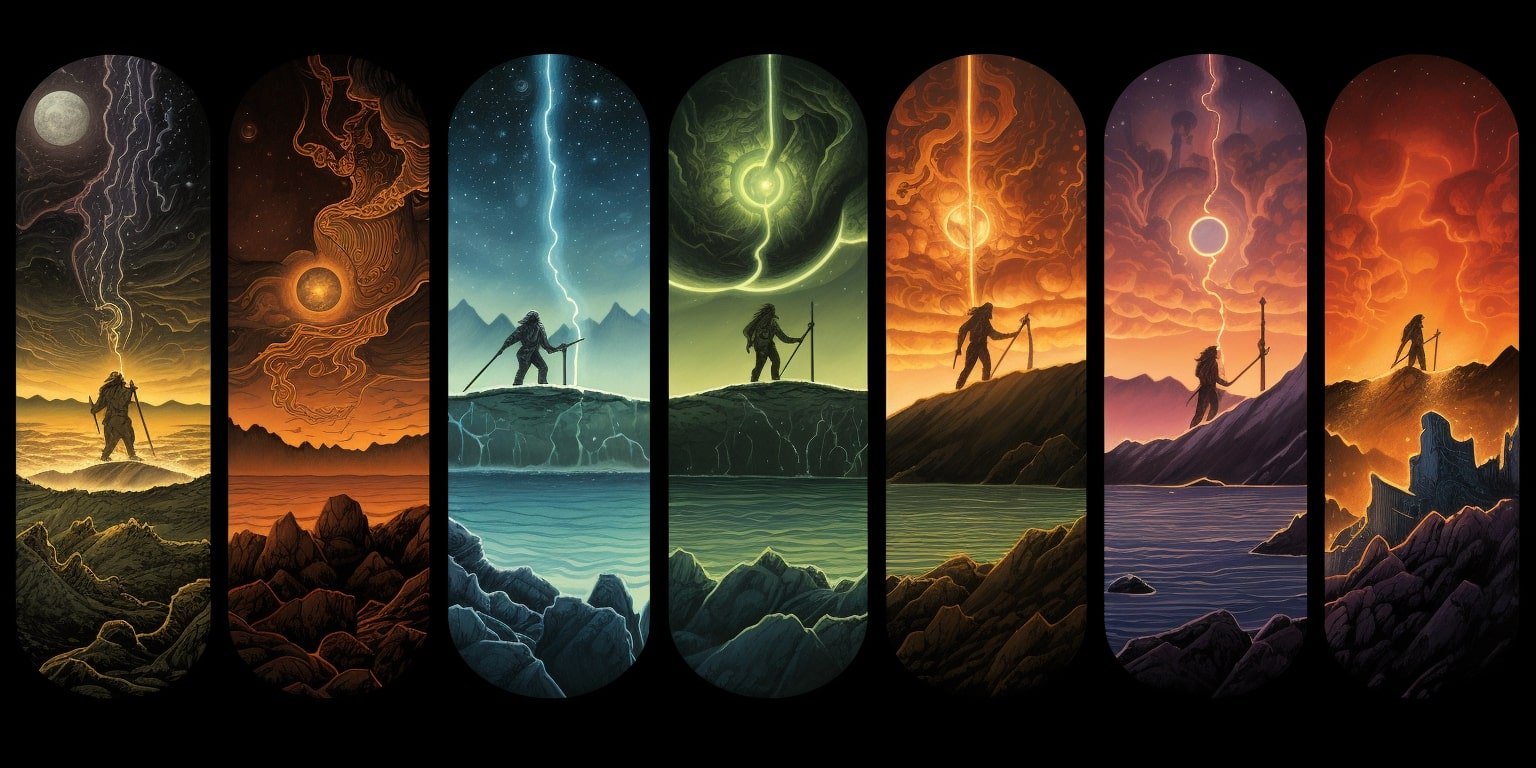
The Vikings told stories of realms layered upon each other, from Midgard (our world) to Asgard (the divine realm), and Hel (the underworld), all connected by the World Tree, Yggdrasil. Modern theoretical physics speaks of branes, multiple dimensions, or “membranes” existing parallel to our own, invisible yet potentially interactive. So… did ancient Norse cosmology intuit multidimensionality before M-theory gave it a math equation?
Or have we just forgotten that stories were once our first scientific models? Shamans across continents and centuries describe: entering other realms, contacting non-human intelligences, receiving symbolic knowledge, undergoing ego death and rebirth. Sound familiar? That’s also a page from DMT trip reports, studied by modern scientists like Dr. Rick Strassman, who found test subjects independently describing entity contact, time distortion, and hyperdimensional environments.
What indigenous traditions call “the spirit world,” Western science is only now starting to acknowledge through neurochemistry and transpersonal psychology. The experiences were never lies. We just didn’t have the tools, or the language, to measure them. If you demand hard evidence, you’ll miss the soft truth.
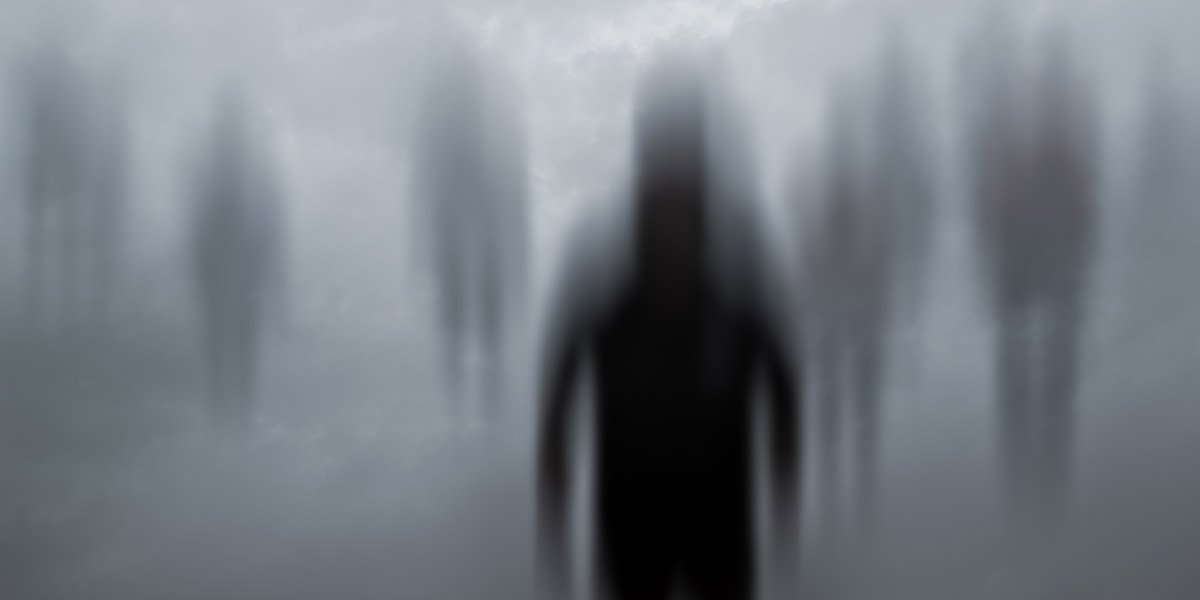
The consistency of experience across culture and time, the psychological transformations that follow contact with the symbolic patterns that appear in dreams, rituals, visions, and altered states. This isn’t chaos. It’s a system. Language. A technology of consciousness. What if myths were multi-layered memory systems? What if ancient rituals were interface protocols for communicating with intelligence outside linear time? And what if folklore was never superstition, just scientific data written in metaphor?
We don’t need to abandon science. We need to upgrade it. To expand the model to include subjective experience as legitimate data, symbolic systems as encoded frameworks, mythology as a repository of long-term empirical observation, consciousness as both observer and instrument. Because until science embraces the unseen, it will remain haunted by it. They weren’t just stories. They were instructions. Warnings. Rituals. Coordinates.
Left behind by ancestors who knew that truth doesn’t always wear a lab coat. And maybe… the door has always been open. We just forgot how to read the signs. You don’t have to believe in ghosts, demons, angels, or aliens. But you should pause, and deeply question, why the world insists you shouldn’t. Because the supernatural may not be “real” in the way your coffee cup is. But what is real, anyway? Ghosts don’t need molecules to matter. Demons don’t require GPS coordinates. Aliens don’t have to land on the White House lawn to alter the course of history.
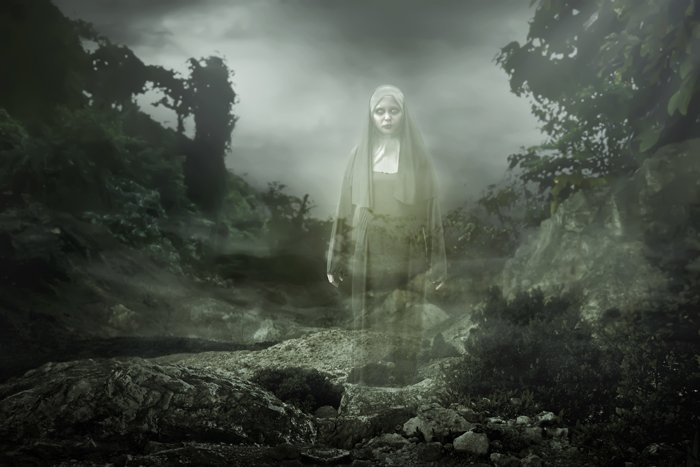
They exist in stories that endure, experiences that scare, and symbols that return, generation after generation. They’ve survived exorcisms, inquisition, censorship, ridicule, and “peer review.” And they’re still here. Still whispering. Still knocking at the door of the rational mind. So, this is Halloween. Don’t just tell scary stories around the camp fire. Ask why those stories exist in every culture.
Ask what truths were smuggled inside them, hidden in metaphor, encoded in fear, wrapped in myth. Because maybe the monsters were never imaginary. Maybe they’re data points from an ancient, ongoing contact with the unknown. Maybe they’re a mirror held up to reality’s unspoken dimensions. And maybe they’re not waiting to be believed… Maybe they’re waiting for science to stop being afraid of the dark. Happy Halloween, go light a candle. Open a forbidden book. Ask the thing in the corner of your eye for what it wants. And whatever you do… Don’t look away.



